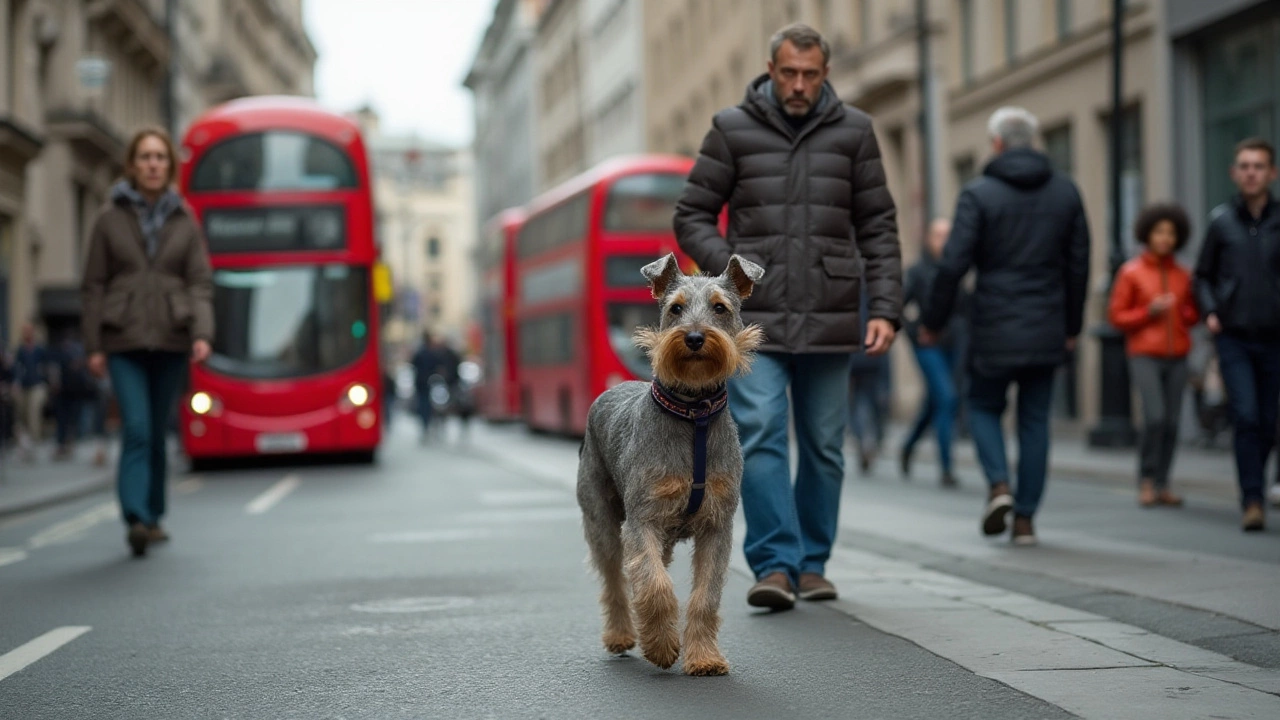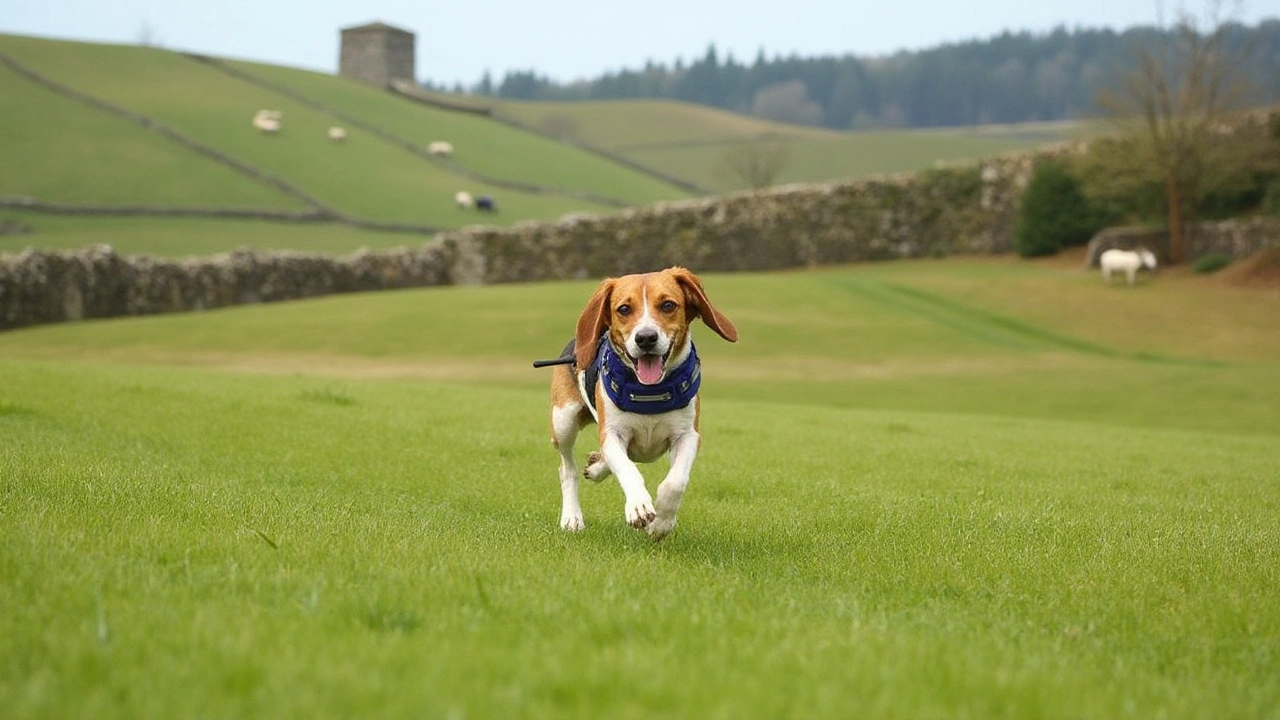Some dogs are natural Houdinis. They have this uncanny talent for pulling a disappearing act just when you think they're secure. A walk in the park turns into a hide-and-seek game in the blink of an eye. For those of us who are proud owners of such escape artists, finding the right collar is crucial.
Choosing a dog collar that can withstand the clever tactics of an escapist pooch involves understanding the mindset of these determined dogs, and it means knowing the specific features that prevent them from slipping away. Join me as we explore the essentials of choosing the perfect collar to keep your furry wanderer close at hand.
- Understanding the Escape Artist Mindset
- Key Features of Escape-Proof Dog Collars
- Types of Escape-Resistant Collars
- Tips for Choosing the Right Collar
- Training Tips for Escape-Prone Dogs
Understanding the Escape Artist Mindset
To truly understand why some dogs have a penchant for escaping, we need to start by looking at their instincts. Dogs are naturally curious creatures; they were once wild animals, and even domesticated pooches retain some of that wild streak. This curiosity can often lead them to go on adventures that their human companions might not have planned for. Some dogs are driven by a strong prey drive that compels them to chase after squirrels, cats, or anything else that moves. The scent of another animal can turn even the most well-behaved dog into a determined escape artist.
Escape-prone dogs often exhibit a strong sense of adventure; they view the world outside of the backyard fence as their oyster. If a dog is left alone for too long or does not get enough stimulation, they might decide to make their own fun by attempting daring escapes. This problem-solving behavior can be traced back to their ancestral roots as well, where finding food, shelter, and safe mating spaces were a constant challenge. These pups are not attempting to defy their owners for the sake of misbehaving; rather, they're acting out of a deep-seated instinct.
Behavior can also be attributed to specific breeds; for instance, Huskies and Beagles are notorious for their drive and intelligence, characteristics that often make them escape artists. These breeds require not only physical exercise but also mental stimulation to keep their minds engaged and reduce the temptation of escape. One interesting study highlighted in the journal Applied Animal Behaviour Science found that dogs with more training and structured activities are less likely to attempt escapes than those who lack mental engagement. As
Canine behaviorist Dr. Susan Friedman notes, 'Understanding the root cause of a dog's need to escape is half the battle; the other half is managing and redirecting that energy constructively.'
Pet owners must make it a point to observe and learn from these behaviors. If your beloved canine is constantly trying to escape, it's helpful to consider their emotional and physical needs. Providing a stimulating environment is crucial. Interactive toys, engaging games, regular walks, and even puzzle feeders can all play a critical role in taming a dog's wandering spirit. If it's a boundary issue, securing your backyard with tall fences, free from potential climbing aids, is a must. Each situation is unique, as are the reasons leading each dog to attempt escapes. Recognizing these factors is essential in finding a solution to keep them happy and secure.
Key Features of Escape-Proof Dog Collars
When it comes to selecting a dog collar that truly can be labelled 'escape-proof,' there are several critical features to consider. Each aspect of the collar is designed to outsmart even the cleverest of canine escape artists. First off, let's talk about the material. The best escape-proof collars are constructed from durable materials like nylon or leather, which withstand significant pulling and chewing, a common tactic among dogs trying to free themselves. This resilience ensures longevity, making it a smart investment for dog owners.
A properly fitting collar is perhaps the most crucial element in preventing escapes. A collar that's too loose gives dogs more leverage to wriggle out, whereas one that's too tight can be uncomfortable or even harmful. Adjustable collars are ideal, allowing you to tailor the fit perfectly to your dog's neck. Look for collars with multiple adjustment points; this flexibility can be a real lifesaver, especially as your dog grows or changes weight.
Another key feature is the clasp. Traditional buckles might not be suitable for escape-prone dogs. Instead, opt for heavy-duty, quick-release buckles that only humans can operate easily. Some collars are equipped with a locking mechanism to further enhance security. Such designs prevent dogs from inadvertently unclipping their collar when scratching or brushing against objects.
Collars with martingale loops or limited-slip capabilities are often suggested for escape artists. These designs are particularly favored for breeds with slender heads, like Greyhounds or Whippets, as they tighten if the dog tries to back out, but remain loose enough not continuously to constrict the neck. This function serves as a balanced way to keep dogs secure without compromising their comfort. Sometimes, the collar incorporates a secondary loop that acts as a safeguard, tightening only when the dog attempts to pull forward or escape.
An interesting tip for owners trying to secure their pet is using anti-slip technology incorporated into the collar's interior. Such designs provide extra grip against the fur, making it even harder for dogs to slide the collar over their heads. Adding reflective stitching or material to a collar adds an additional safety aspect, not only making your dog visible at night, but also deterring potential escapes during low-light conditions.
Let's not overlook technological enhancements. Today's market offers a range of GPS-enabled collars. While not strictly an escape-proof feature, it offers peace of mind by tracking your dog's location if they do manage to outsmart their collar. Many such collars offer a combination of GPS and durable design features that are purposely crafted for highly active or adventurous dogs.
Training is often a complementary tool alongside owning an escape-proof collar. No collar can substitute the benefits of a well-trained dog used to wearing it. Pat Miller, author of numerous positive dog training books, often emphasizes, "Training your dog to understand boundaries and the importance of not pulling during walks significantly aids not just in comfort, but in overall safety, preventing unplanned escapes."
Pat Miller, in ‘Do Over Dogs’, mentions, "Consistency in using positive reinforcement to train your dog to appreciate its collar can mitigate many escape attempts."
Understanding your dog’s needs and behaviors is as important as selecting a collar with the right features. A combination of durable construction, appropriate fit, and modern technology creates the most effective barrier against canine escape attempts. So, the next time your dog eyes the horizon with cunning intent, you'll be armed with both knowledge and a collar that can stand the test.

Types of Escape-Resistant Collars
Finding the right dog collar for an escape artist pup can feel like a quest for the Holy Grail. It's all about combining comfort with security, without turning the strolls into medieval torture. There are several types of collars on the market designed specifically for these clever canines, and knowing the difference can greatly influence which one you'll choose. Slip collars, martingale collars, and harnesses are the primary options, and each brings its unique value to the table.
The martingale collar is a popular choice because it combines gentle control and escape prevention. It's designed with an additional loop, which tightens slightly when pulled, preventing the dog's head from slipping out and providing just enough pressure without choking. These are especially favored for breeds with heads narrower than their necks, like the Greyhound. These collars are a happy medium between traditional collars and the full-on embrace of a harness.
Then there's the slip collar, or the loop collar, which functions based on a similar principle of tightening when tension is applied. The slip collar is particularly useful during training, as it encourages the dog to remain close without constant correction from the owner. These collars should be used with care and never be left on an unsupervised dog, but they're quite effective in high-excitement environments where a dog might make a break for it.
Harness Options
For some pets, a harness becomes the go-to method of ensuring they stay safe and sound. These devices distribute pressure evenly across the dog's body, thus reducing the risk of injuries and increasing comfort. There are dual-clip harnesses which provide points of control at both the chest and the back, making it extremely difficult for a dog to wriggle out. These are favorites among owners of brachycephalic dogs, where neck pressure must be avoided.
According to PetMD, 'Harnesses that feature front clip styles often provide better control for dogs prone to pulling, while back clip designs are less restrictive and more comfortable for everyday use.'
Another standout is the head halter or head collar, which might resemble something more akin to a horse bridle. It offers unrivaled control, allowing you to guide your dog's movements comfortably. Though often mistaken for a muzzle, head halters are much kinder, allowing the dog to pant and drink freely. While getting used to this style can take time, it provides unparalleled assurance for those eager escapees.
Finally, emerging tech-driven collars with GPS tracking allow owners unprecedented vigilance over their pesky rovers. While not escape-proof by themselves, these collars mean if Fido does manage to flee, he won't get far before you can locate him. For tech-savvy owners, these collars can provide peace of mind that's simply not possible with traditional options alone.
Tips for Choosing the Right Collar
Choosing the right dog collar for an escapist pup is a blend of art and science, a task that requires a keen understanding of your dog's behavior and needs. First, consider the temperament of your furry friend. A collar that works well for one dog might be entirely inadequate for another. Just as people have unique personalities, so do dogs, and their collars should reflect their specific quirks and escapist tendencies. For instance, a stubborn Bulldog might benefit from a collar that combines comfort and firm resistance, while an agile and quick-witted Terrier may need something that offers more lateral control.
It’s crucial to ensure the collar fits correctly. A collar that is too tight can be uncomfortable and cause harm, while a collar that's too loose will do little to deter a resourceful dog from slipping free. The two-finger rule is a guideline many pet experts recommend: you should be able to comfortably slide two fingers under the collar while it's being worn. This ensures it’s neither too snug nor too slack. Materials also play a significant role. Leather and durable nylon can provide strength, but some dogs may be more comfortable with softer fabrics that prevent rubbing and irritation. Padded collars provide an added layer of comfort, which is especially crucial during long wear periods.
Consider special features designed specifically for escape-proof collars. For instance, some companies offer double-buckle mechanisms or Martingale collars, which tighten when the dog pulls, reducing the risk of slipping off. Additionally, breakaway clasps, although primarily designed for safety in avoiding choking hazards, can be counterproductive if you have an escape artist on your hands. Instead, look for collars that stay secure under tension. Many pet owners have successfully used GPS collars, which might not physically restrain a dog, but they provide peace of mind by allowing you to track your dog's whereabouts if they do manage to wander off. This nifty piece of technology can be a lifesaver, or at the very least, a stress saver for pet owners constantly worried about their pet's adventurous spirit.
It's also essential to take into account the environment in which the dog spends most of its time. Dogs that frequently participate in outdoor activities such as hiking or visiting dog parks may require more rugged and water-resistant collars compared to those who spend most of their time indoors or in temperate climates. Brightly colored collars or those with reflective strips offer additional safety benefits, making it easier to spot your canine friend in low-light conditions, reducing risks, and enhancing security.
"A well-fitted and functionally appropriate collar is not just an accessory, but a vital part of your dog's safety gear," says renowned veterinarian Dr. Emily Thompson. "It's the immediate touchpoint any time you go for a walk, and it should be as thoughtfully chosen as sending your child off with the right pair of shoes or a bike helmet."Your lifestyle and your dog's activity level also play significant roles in selecting the perfect collar. For those with especially determined escape artists, combining a collar with additional safety gear such as harnesses or vests could offer added security and peace of mind. There's a world of possibilities, and with careful consideration, you can zero in on the ideal collar that keeps your canine companion safely by your side, ready for many more adventures together.

Training Tips for Escape-Prone Dogs
Raising a dog who has the knack for slipping out of tight spots can be challenging, but with persistence and savvy training methods, you can turn those escape antics into safe companionship. For starters, it’s crucial to understand why your dog might be trying to escape. Is it a case of boredom, anxiety, or pure curiosity? Once the underlying cause is identified, you can tailor your training approach to address those specific needs. It’s worth remembering that dogs often seek stimulus beyond their immediate environment, driven by a powerful sense of smell or an innate instinct to explore, and this is quite natural.
One effective training method involves consistent boundary training. Teach your dog the limits of your home or backyard using commands and rewards. Start by introducing a command like "stay" or "come" when they approach gates or boundaries. It’s essential to be patient and offer praise and treats when the dog responds appropriately. Repetition is key, and over time, your dog will learn to associate certain areas with not crossing the boundary line.
Another practical approach is ensuring your dog has adequate mental and physical stimulation. Dogs with excessive energy may find outlets in escaping, so engaging them with interactive toys, puzzles, or frequent walks could significantly reduce such tendencies. Incorporating obedience training sessions can also be beneficial. Obedience commands such as "sit," "stay," and "heel" can help refocus your dog’s energies and instincts into productive behavior. The American Kennel Club notes that regularly varying your dog's routine and introducing new tricks can reduce boredom-related escapes.
Consider leash training as you work on escape prevention. An escape-proof collar combined with the proper leash training ensures your dog is secure during outings. Practice walking with your dog by your side, rewarding them for maintaining the correct position and not pulling away. When well-executed, this kind of training reduces the chance of them slipping away while out on adventures.
According to Cesar Millan, "A dog’s physical exercise and mental stimulation are equally important. Finding balance in these can create a well-rounded pet less likely to seek disobedience.”
Finally, take advantage of resources like fence barriers, especially if you have a yard. Some dogs are cunning enough to dig their way out or leap over seemingly high fences. By providing a secure outdoor environment, using invisible fencing, or adding extensions to existing barriers, you can minimize escape incidents. Complement environmental adjustments with technology, such as GPS collars. These provide peace of mind, allowing pet owners to track their pups and react swiftly if they do manage to outsmart security measures.
